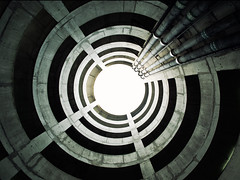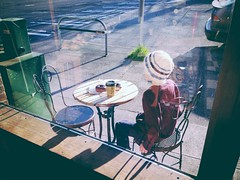Seasoned Enthusiast
...still on learning mode...
28 June 2016
28 March 2014
LUUV starts Indiegogo campaign for 3D-printed camera stabilizer
 LUUV has started an Indiegogo campaign to fund the production of a 3D-printed camera stabilizer.
LUUV has started an Indiegogo campaign to fund the production of a 3D-printed camera stabilizer.
26 December 2012
Cyber Monday: Strobist DVD sets on Sale for $49.99 each
View the Original article
26 November 2012
Nikon D600

Review based on a production with firmware v1.0
Nikon officially announced the long-rumored and much-leaked D600 a week before the Photokina trade show in September. The D600 is a full-frame DSLR aimed at enthusiasts, with a price to match. At a body only price of $2099/
View the Original article
Panasonic Lumix DMC-FZ200

The Lumix DMC-FZ200 ($599) is Panasonic's flagship super-zoom digital camera. While recent models have been relatively minor upgrades, the FZ200 returns to its roots by featuring a lens with an F2.8 maximum aperture across its entire zoom range. The early models in the FZ series (FZ1 - FZ20) had lenses with constant maximum apertures, but that stopped with the FZ30, launched back in 2005. Last year's DMC-FZ150 had an F2.8 - F5.2 lens, so the lens on the FZ200 is a huge improvement, and the extra brightness should make a real difference at long focal lengths and/or in poor light, allowing you to shoot at lower, less noisy ISO settings.
In combination with the newly-developed 12MP MOS sensor, this makes the FZ200, at least on paper, by far the best choice in the superzoom segment for low light shooting. That large aperture allows it to offer faster shutter speeds at the same ISO settings as its peers, or use lower sensitivities at the same shutter speeds as the competition.
While the Leica-badged lens is definitely the number one head-turner on the FZ200's spec-sheet, the remainder reads very well too. As usual you can frame and review your images on either on the rear LCD or the electronic viewfinder. The latter is a new 0.2-inch variant with 1,312,000-dot equivalent resolution. The 'equivalent' part of this statement stems from its 'field-sequential' design - instead of having triplets of dots showing red, green and blue at all positions, it displays one color, then the next, at each position. The downside of this approach can be that if you move your eye quickly, or blink, you become aware of delays between the three colors being drawn - with colorful, rainbow-like edges appearing. Thankfully this display runs at 60hz, so this effect isn't too noticeable.
Panasonic Lumix FZ200 key specifications 24x 25-600mm equivalent lens with F2.8 across the zoom range 12.1-megapixel High Sensitivity MOS sensor 12 fps continuous shooting High Speed Video at 120 fps (HD) or 240 fps (VGA) 1080 60p video recording in AVCHD or MP4 formats 0.2-inch EVF (Electronic View Finder) with 1,312,000 dot equivalent resolution 3.0-inch, free-angle 460,000-dot LCD screen Panorama Shot mode RAW and RAWView the Original article
Canon PowerShot G15

Review based on a production
Canon's PowerShot G-series is one of the most iconic lines of digital compact cameras, with the original G1 having debuted right back in September 2000. The original models sported fast lenses, articulated LCDs, optical viewfinders, Raw data recording and lots of external control, and were aimed at tempting enthusiasts who usually shot with 35mm SLRs to dip a toe into the brave new waters of digital photography.
The line took a hiatus for a couple of years between 2004-6 when affordable APS-C SLRs started to appear, before being reinvented with the smaller, slimmer G7 - redesigned as a compact camera for SLR-owning enthusiasts. To the dismay of many G-series fans, the G7had a slower lens, fixed screen and didn't record Raw. Since then the G7's design has provided the basis for a number of subsequent models, adding back Raw and the swivel screen along the way, right up to the G12 that's been on the market for two years. In the meantime Canon created the G1 X - a variant on the same basic design with a much-larger sensor, and at a correspondingly higher price-point.
Now, with the launch of the G15, Canon has added back one of the original selling points of the G-series; a genuinely fast zoom lens. This covers the same 28-140mm equivalent focal length range as the G12's, but is a stop and a third faster, at F1.8-2.8 rather than F2.8-4.5. This gives the G15 a distinct advantage over its predecessor not only in low light, but also in the ability to blur backgrounds a bit more when shooting at the long end of the zoom.
But while Canon gives with one hand, it takes away with the other. The G15's rear screen is fixed, rather than articulated, a move that Canon says was necessary to make the camera smaller and more pocketable. The G15 is indeed significantly slimmer than its predecessor - by about 15% with the lens retracted - but we can't help but feel that as many potential buyers will be dismayed by the loss of this useful feature as there will be enthusiasts who are delighted by the camera's portability. The G15's screen itself is a large, high-resolution 3" 920k dot unit with a tempered glass cover and a wide viewing angle.
key features 12MP 1/1.7" Canon CMOS sensor 28-140mm equivalent F1.8-2.8 lens, 4-stop 'Intelligent IS'. DIGIC 5 processor ISO 80-12800 Fixed 3" 920k dot PureColor II G screen Optical viewfinder Raw format recording Dual-axis electronic levelThe G15 uses a Canon-made 12.1MP 1/1.7"-type CMOS sensor, the same as that found in the co-announced S110 (and similar to the one used on the S100), which offers an ISO range from 80 to 12,800 in concert with the DIGIC 5 processor. As we'd expect, Full HD movie recording is available, at a framerate of 24 fps and stereo sound from the built-in microphones. The G15 also (finally) gains a dedicated movie record button, for the first time on a small-sensor G, and the lens can zoom and focus during recording.
One notable improvement from the G12 is distinctly quicker autofocus - 53% faster, according to Canon - which if true, would make the G15 the fastest-focusing compact the company has made. The G15's CMOS sensor also enables rapid continuous shooting at 10 frames per seconds, although only in the somewhat-restrictive High Speed burst HQ mode. In other modes the G15 will shoot at 2.1 fps.
View the Original article
Photographers Still Making Sales on Flickr
They might well find what many professional photographer have long known: that Flickr can still deliver sales to photographers with the right images and the knowledge to reach buyers.
Chris Nuzzaco is one of those photographers. A former videographer and director of photography who shot occasionally, he switched disciplines in 2008 when the recession dried up orders and he realized that photographers had better working conditions, options and control.
View the Original article
Remembrance Photography Helps Families to Heal

The absence of staff photographers makes scheduling shoots a challenge. While some parents may have advanced notice if life support is about to be removed or a caesarian is scheduled, photographers can struggle to rearrange their day. In most cases, however, a photographer is able to reach the hospital between two and twelve hours after receiving the call, and for those times when a photographer is unavailable, the organization also trains nurses to take the photographs themselves.
View the Original article
Mike Kelley's Leap of Faith

It's a truism that creative growth is nonlinear.
Which is to say that, while we (hopefully) do improve steadily over time, meaningful growth happens in fits and starts. You have an experience of some sort, and after you come out of it you realize you will never be the same photographer again.
Now, while you certainly can wait for someone to hand you that experience on a platter, doing so is putting the ball in someone else's hands. Which is fine if you are both patient and lucky.
Or, you can do what architectural photographer Mike Kelley did, and decide to make it happen on your own.
__________
Have Speedlight, Will Travel
You may remember Mike from this previous article, in which he detailed his techniques for shooting sophisticated architectural photos using a DSLR, a super-wide, a PocketWizard and a single speedlight. He mostly shoots high-end houses for commercial clients.
But rather than settle for portfolio homogeneity dictated by his clients, he made the decision to hire himself into a dream assignment
View the Original article




